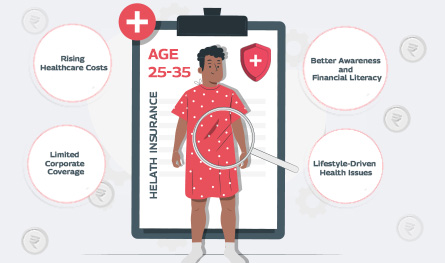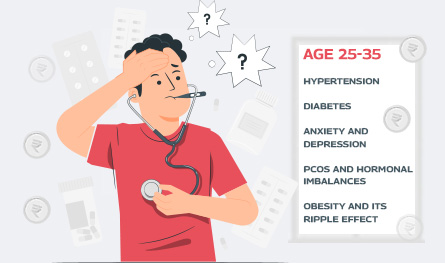Rejection and Repudiation of Insurance Claims
According to IRDAI data, Indian insurers have allowed 11% of the health claims and 6% are pending as of March 2024. Therefore, claims worth ₹26,000 crore have been disallowed or repudiated, which is 19.10% higher than ₹21,861 crore rejected in the last fiscal.
In FY24, insurers rejected claims worth ₹15,100 crore, up from ₹12,754 crore in the previous fiscal, with repudiations at ₹10,937 crore against ₹9,107 crore. Repudiation is when an insurer, after evaluating a claim as much as possible, rejects it on the ground that it does not fall within the policy terms, while claim disallowance is when an insurer refuses to process a claim because of some anomalies or lack of sufficient information.
Claims Settlement Insights
General and health insurers have settled 2.69 crore health insurance claims up to FY24 with an average claim settlement of ₹31,086, as per the report available with IRDAI. TPAs entertained 72% of the claims and 28% were entertained and paid by the insurers of the above.
The most important criterion of an insurer’s solvency is the claim settlement ratio, which is the total number of claims paid out against the total number of claims filed. A ratio of above 85% is normally considered ideal because it guarantees that the claims will be paid.
Non-life Insurance
They also gave details of the life and non-life insurance market. Death claims in life insurers in FY24 were ₹48,512 crore as against ₹46,380 crore in the previous year. Of this, ₹28,868 crore was on individual policies and ₹19,644 crore was on group policies.
The non-life insurance industry has a direct premium of ₹2.90 lakh crore in the non-life insurance segment, which is 12.76% higher than last year. The premium rates of general insurers in the public sector have gone up to ₹90,252 crore in FY24 from ₹82,891 crore in FY23, an increase of 8.88%. Among the players, the standalone health insurers are closer to this growth as the premium underwriting has grown from ₹1,58,000 crore to ₹1,88,000 crore.
Low Insurance Density
However, the premium collected was more than $200 billion and the insurance penetration rate fell for the second year in a row. In FY24, penetration has fallen to 3.7% from 4% in FY23 and 4.2% in FY21-22, which was impacted by COVID-19. This is quite the opposite of the global trend and one has to doubt the efficiency of the Indian insurance companies in increasing the insurance density.
Rising Commission Costs
As per the report of the IRDAI, the commissions of the life insurers for the FY-24 were ₹ 51,524 crore, 21.74% higher than that of the previous year. The commission expenses ratio has also increased from 5.41 % to 6.21%.
Future Prospects and Issues
The increase in the number of rejected claims and the decrease in insurance density suggests that the insurance industry should be liberalised. The increase in trust and convenience may be explained by a higher level of transparency, easier and more understandable procedures for claims filing, and more knowledge of policyholders.
Moreover, technology and higher regulation will be the triggers for improvement in the insurance market because insurers will have to bear higher costs and a higher risk of fraud.
.png)




.png)



